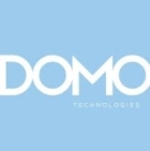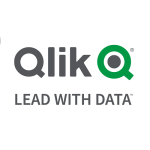What is our primary use case?
I have used IBM Cognos for 15 years as a business user, but for most of this time I only used the basic functionality of Cognos with Analysis Studio. However, two years ago we started using the new version of Cognos (11) and it was then that we began using more functionality overall. Notably, there are more features for reporting, so we can simply create modules and explore them with dashboarding.
Our deployment is situated on-premises, although we do use external databases connected to Excel, for instance. The packages that we use are all made inside the Cognos 11 environment.
How has it helped my organization?
IBM Cognos has helped improve the quality of our KPIs because we can now deliver data and reports without human intervention.
We are using the self-service capabilities for business users in the new version and it is a blessing to us because now we don't feel any pain with regards to the IT department. We can use the full functionality and develop dashboards without the help of the IT people and without having to start up a whole new project. This is very important because we can multiply the results. With no bottleneck coming from the IT department, we reduce the cost of improving our KPIs.
What is most valuable?
The main difference that I like about Cognos compared to other solutions is its data splitting functionality. We have all our company data inside the Cognos environment and so we prefer to split the information Cognos itself. It's more efficient this way.
Tableau and Power BI also have similar features, where they try to use graphic functionality to analyze the data. And yes, there are more people using these solutions than Cognos, but for us the most important thing is that both the data and the data splitting functionality are in one place.
What needs improvement?
I don't like that when we use Colab packages, we get less functionality. For example, you can make groups of data with Excel or with the data sets from the packages, but when you use the Colab packages directly, you can only group the data when you analyze it with Analysis Studio. I think Cognos needs to improve more on this functionality.
The user experience is also very important. Cognos is not very easy to understand sometimes, especially when they change the layout but keep the functionality the same. The help is not very graphic and they have no examples. Cognos has to make a big effort to help with understanding the functionality by improving the documentation. There is a lot of documentation, but the examples are hard to find and they should make their help section easier to understand for non-technical users.
Buyer's Guide
IBM Cognos
October 2025
Learn what your peers think about IBM Cognos. Get advice and tips from experienced pros sharing their opinions. Updated: October 2025.
869,883 professionals have used our research since 2012.
For how long have I used the solution?
I have been using IBM Cognos for 15 years.
What do I think about the stability of the solution?
The performance is okay. Sometimes we have small interruptions and I suspect these are due to configuration changes, but I don't know for sure. Cognos was one of our first applications running and it's quite stable.
What do I think about the scalability of the solution?
As a business user, we try to do cross solutions to provide information for any department, and then we make it scalable. If the performance isn't good, we can either adjust the scalability of the data or the data strategy itself.
Currently, there are more than 2,000 users of Cognos in my organization, as it is mainly a cooperative tool for analysis. I think with the added capabilities and improved user experience of the new version we can extend the use of Cognos to even more people. We try to democratize the analysis of data with the dashboard as it is the easiest way to extend our usage of Cognos.
Which solution did I use previously and why did I switch?
There are other solutions we also use, such as Tableau and Power Bi, depending on the project. But in these applications, there isn't the same amount of data available to analyze, so you have to provide the data for each dashboard, in each case. For all the solutions we use, we have safety measures to ensure the security of the data, but with Tableau and Power BI, the setup is less organized than Cognos.
What about the implementation team?
Our IT department uses their personnel as well as consultants to maintain the Cognos environment.
What's my experience with pricing, setup cost, and licensing?
I don't know the exact cost, but I believe Cognos is quite expensive, especially when it comes to the support consultants and the procedures that need to be applied.
What other advice do I have?
My advice to others is to make solutions with a bridge between them to optimize the use of the data. In addition, it's important to structure your data well to facilitate better understanding among your users. When users use a data module, for example, it must have well-structured folders which include the documentation, the calculations, the KPIs, etc. We train to make all the KPIs in the data module, because if you make the KPIs in the report or in the dashboard, then you can't use those KPIs in other objects. We have had other solutions from different consultants where they made the calculations with the reports, such that to make another report, you would have to repeat the calculation.
Another piece of advice is not to use the Analysis Studio's reporting tool, because it's very complex to maintain. Instead, we tend to use the dashboard, and that is what I would recommend to others as well.
On the whole, I would rate IBM Cognos an eight out of ten.
Which deployment model are you using for this solution?
On-premises
Disclosure: My company does not have a business relationship with this vendor other than being a customer.


















